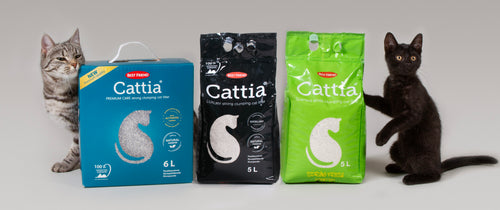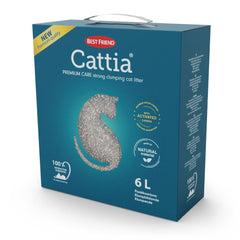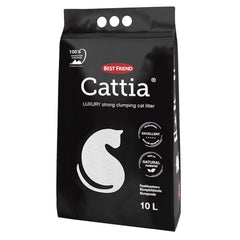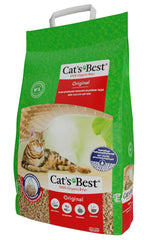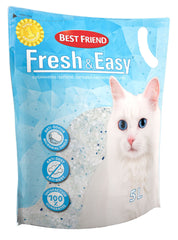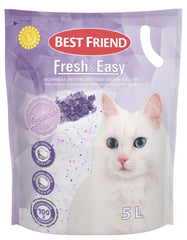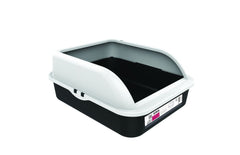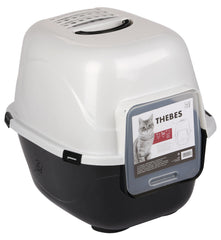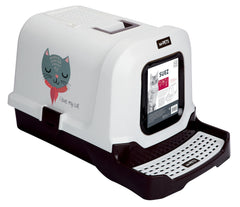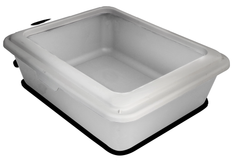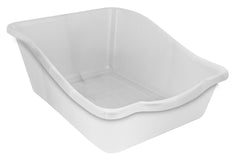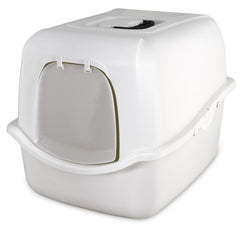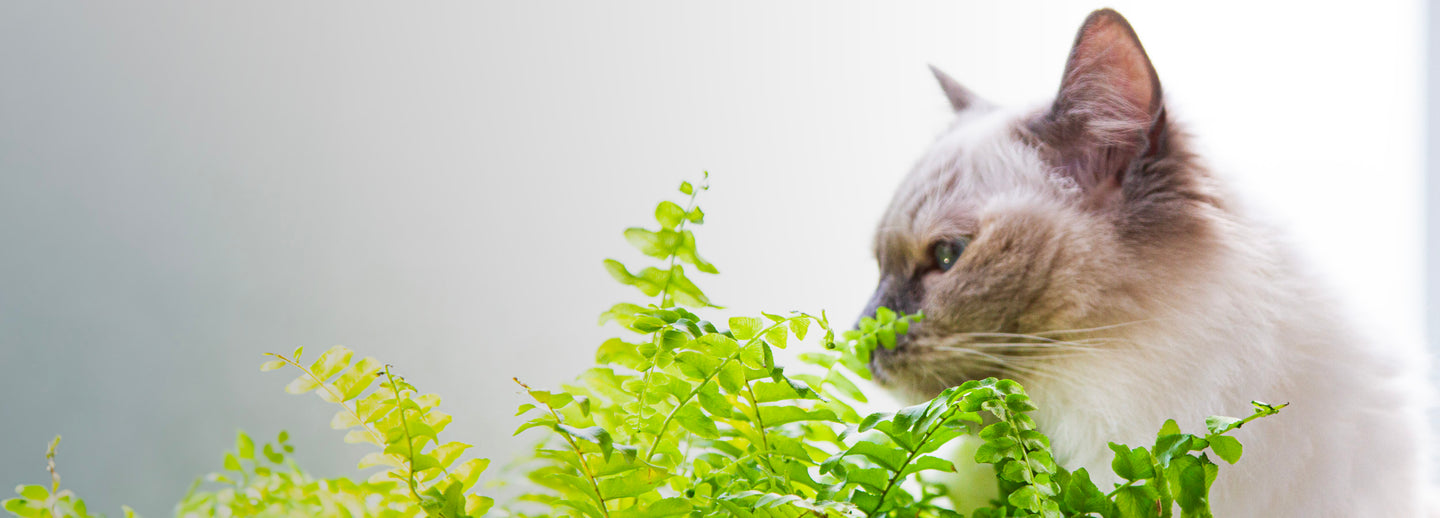
Cat Litter
What to Consider When Choosing Cat Litter?
A home that smells like cat pee - no thanks! But, how to choose the best cat litter then?
Choosing the right cat litter is one of the most important things in taking care of your cat's hygiene. High-quality and functional cat litter that your cat prefers directs the cat to the right place to relieve itself, and at the same time it is easy to take care of the hygiene of the cat litter box on a regular basis. The cat litter box must be cleaned and scooped daily so that the cat agrees to use the litter box. Also, the whole cat litter in the litter box needs to be changed regularly followng the instructions on the cat litter package. At the same time making sure that the cat litter box is cleaned carefully.
There are two types of Cat litter available: clumping or non-clumping. Both offer different options in different price ranges in terms of material, product scent and grain size.
Best Cat Litter
Finding the most suitable cat litter for you and your cat depends on many factors, such as the preferences of the cat and the owner, the quality and functionality of the cat litter, or the price of the product. The choice of cat litter is often most influenced by its very important properties such as moisture absorption capability, odor prevention, dust-free and ease of use. It is good to try different options and choose the kind of cat litter that best suits both the cat and your own needs.
When choosing cat litter, there are several factors that should be considered in terms of the cat's health and well-being, as well as, keeping the home tidy.
KATTSAND
Cat Litter Type:
Clumping or non-clumping cat litter?
There are two types of cat litter available, either clumping or non-clumping. With both cat litter types, the cat's solid droppings should be removed from the box daily. Like the name suggests, the clumping cat litter forms a solid, odor-binding clump when it gets wet. The solid clump is then easy to remove from the box with a sand shovel. After scooping, add a little cat litter to the cat litter box. The higher the quality of the cat litter, the denser and less litter-binding the lump is. Non-clumping cat litter is again made of porous and absorbent material that absorbs moisture and odors. This type of cat litter is completely replaced with new cat itter every few days or weeks, depending on the material and the quality and absorbency of the cat litter.
Material
Cat litter are made of different types of materials. Clay-based bentonite is one of the most common materials in clumping cat litters. Strong clumping, high-quality and natural bentonite cat litter, such as Best Friend Cattia, is easy and lasting to use. Biodegradable cat litter is made from compostable, renewable natural material, e.g. wood, which is used in both clumping and non-clumping litters. When choosing ecological, environmentally friendly cat litters, it is good to note that the often slightly more expensive, clumping litter is usually easier to use and ultimately also cheaper in use. Pellets or similar type cat litter made of the cheapest material tend to break down easily into moist crumbs. The absolute number one among non-clumping cat litter is silica cat litter, which is made from diatomaceous earth , which has excellent odor and moisture binding properties. When the litter dries, the moisture evaporates from it, locking the odors firmly in the silica cat litter, so after a while the cat litter is dry and fresh to use again. Because of this, the same slica cat litter can be used for weeks.
Cat litter is available both unscented and scented. When choosing scented litter, it is recommended to use mildly scented cat litter. The mild scent covers the smell of cat pee and keeps the environment fresh. Too strongly scented litter can completely drive the cat away from the cat litter box or even cause allergic symptoms in a sensitive cat. The owner of a sensitive cat should prefer sand that is unscented and made from as natural a material as possible.
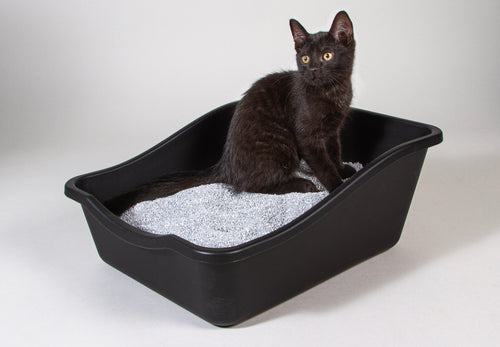
Cat litter recycling:
Used cat litter is most commonly recycled as mixed waste. Some waste companies recommend putting biodegradable cat litter in the bio waste, but even then the cat's feces must be removed from the waste first. Some few biodegradable litters can also be flushed down the toilet in very small quantities, although it is always preferable to dispose of the cat litter in another way. You should always check the instructions for recycling used cat litter locally.
Moisture and odor absorption capacity:
If the cat litter doesn't work properly, the cat owner will soon notice that and will not buy the same product again. The moisture and odor binding ability can vary a lot depending on the litter material and especially dependeing the quality of the litter. High-quality cat litter absorbs a lot of moisture and tightly locks in odors, keeping the home and the cat litter box fresh. No matter what type of cat litter you use regardless of the amount of cat litter, a clean and fresh litter box requires daily scoopin of solid waste.
The odor-binding capacity of cat litter can be improved e.g. by adding natural activated carbon to the litter. It's worth testing and considering activated cat litter with carbon if your cat's urine has a strong odor or if there are several furry paws living at home.

Grain size and dust-free:
Low dust is an important feature of cat litter, because very dusty litters can easily spread from the box to its surroundings and dust can also cause respiratory symptoms for both the cat and the owner.
The grain size affects both the functionality of the cat litter and the spreading of the litter from the litter box. Small-grained litter is usually more effective in terms of moisture and odor binding, and in the case of clumping litter, a small grain size also creates a firmer, easier-to-remove, litter-saving lump. On the other hand, fine-grained litter may be spread more easily in fur and paws outside the litter box, so owners of long-haired cat breeds should take this into account also.
The grain size affects both the functionality of the cat litter and the portability of the sand from the litter box. Small-grained sand is usually more effective in terms of moisture and odor binding, and in the case of clumping sand, a small grain size also creates a firmer, easier-to-remove and sand-saving lump. On the other hand, fine-grained sand may be carried more easily in fur and paws outside the litter box, so owners of long-haired cat breeds should take this into account.
KATTLÅDOR/TOALETTER
Remember These Tips Regarding Cat Litter!
A messy, smelly cat litter box does not excite anyone - especially not the cat. By testing, you can find the most suitable cat litter and toilet supplies for you and your cat.
- The cat must have a safe place and easy access to the cat litter box, so pay attention to the location of the litter box at your home. A place that is too restless can cause stress for the cat - and thus cat can do its business somewhere else than in the box.
- Each cat must have at least one box of its own, i.e. in multi-cat households there must be several boxes. Cat litter boxes should be placed in different places.
- Select accessories as needed. Choose a sturdy cat litter box or cat toilet that is easy to clean. A toilet with a door keeps the smells inside better, but it is worth noting that not all cats like a closed toilet. You can also practice using the cat litter box first without the door or even without the roof part. A high edge or a separate edge keeps the litter in the cat litter box better when the cat is digging the litter. When using fine-grained cat litter, it may be necessary to get a separate litter-collecting mat in front of the box. When using clumping cat litter, you should choose a Cat Litter Shovel with appropriate sized slots for removing clumps, thus saving you from throwing excess litter in the trash. You can use a protective bag on the bottom of the cat litter box or toilet, making it easier and faster to keep the box clean and also easier and faster to replace the whole catter litter.
- You should put enough cat litter in the box, the instructions can usually be found on the package. The cat litter can melt and stick to the bottom of the litter box, or odors are not bind to the litter properly if there is too little cat litter in the cat litter box. it is also natural for cats calw and dig in order to cover their droppings, so cat litter should be reserved for this need as well.
- The litter box requires daily cleaning, i.e. removal of solid waste, regular cleaning of the box and replacement of all litter. Disinfecting the litter box is necessary when changing the litter, especially if the cat currently has or has recently had an infection.
- When testing new cat litter, you should proceed with the testing little by little. Changing to completely new cat litter can cause the cat to shun the box completely. For example, when a kitten comes to a new home, initially use the old, familiar litter they are accustomed. You should get used to the new litter by first mixing it on top of the old cat litter.
Finally, you should also always trust your own cat. Sometimes the cat just refuses to use a certain type of litter, period. For example, the cat may shy away of the smell of litter or the feeling of too coarse grain under its paws. In this case, it is best to switch to a litter, which is accepted by the cat, in order to keep the peace in the toilet!
